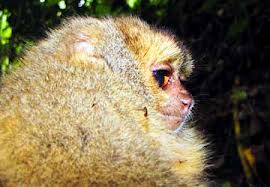2012 was alright for horror and paranormal movies. Here is a list of some of the most popular horror movies for the year 2012. We hope 2013 will be gorier and scarier for horror and paranormal movie fans alike!!!
The Devil Inside
What is it? The first in a line of "micro-budget" horror movies from Paramount seeking to repeat the success of the studio's Paranormal Activity series,
Stars: Bonnie Morgan, Fernanda Andrade, Simon Quarterman, Preston James Hillier, Evan Helmuth, Suzan Crowley, D.T. Carney
Director: William Brent Bell
Release Date: January 6, 2012
Underworld Awakening
What is it? The fourth entry in the vampires-versus-werewolves action-horror series, with Kate Beckinsale returning to the starring role and Swedish directors Mans Marlind and Björn Stein (Shelter) taking over behind the camera.
Stars: Kate Beckinsale, Michael Ealy, Sandrine Holt, Robert Lawrenson, Stephen Rea
Directors: Mans Marlind and Björn Stein
Release Date: January 20, 2012
The Grey
What is it? A survival thriller from the director of The A-Team about a group of oil-rig roughnecks stranded on the sub-arctic tundra who are hunted by a vicious pack of rogue wolves.
Stars: Liam Neeson, Dermot Mulroney, James Badge Dale, Frank Grillo, Joe Anderson, Nonso Anozie, Dallas Roberts
Director: Joe Carnahan
Release Date: January 27, 2012
The Woman in Black
What is it? Harry Potter's Daniel Radcliffe stars in this ghost story based on the Susan Hill novel about a young lawyer who travels to a remote village to sort out a recently deceased client's papers and encounters the vengeful ghost of a scorned woman terrorizing the locals.
Stars: Daniel Radcliffe, Ciaran Hinds, Liz White, Janet McTeer, Alisa Khazanova, Shaun Dooley, Alisa Khazanova, Sidney Johnston
Director: James Watkins
Release Date: February 3, 2012
Ghost Rider: Spirit of Vengeance
What is it? Sequel to the 2007 comic book adaptation Ghost Rider, with the directors of the Crank movies taking over behind the camera.
Stars: Nicolas Cage, Idris Elba, Ciaran Hinds, Christopher Lambert, Johnny Whitworth
Director: Mark Neveldine, Brian Taylor
Release Date: February 17, 2012
Gone
What is it? Thriller about a woman who is convinced that the serial killer who kidnapped her two years before has come back and taken her sister. However, the police don't believe her story, and she's left to face the madman alone.
Stars: Amanda Seyfried, Jennifer Carpenter, Wes Bentley, Sebastian Stan, Joel David Moore, Michael Paré
Director: Heitor Dhalia
Release Date: February 24, 2012
Hansel & Gretel: Witch Hunters
What is it? An adaptation the famed fairy tale that picks up 15 years after the brother-and-sister duo Hansel and Gretel escape from the clutches of the evil cannibalistic witch, as they occupy their time working as bounty hunters with a score to settle against all witches.
Stars: Jeremy Renner, Gemma Arterton, Famke Janssen, Peter Stormare, Derek Mears, Zoe Bell, Thomas Mann, Monique Ganderton
Director: Tommy Wirkola
Release Date: March 2, 2012
The Raven
What is it? Fictional exploits of author Edgar Allen Poe, as he hunts a serial killer who models his crimes after the deaths in the author's stories.
Stars: John Cusack, Luke Evans, Alice Eve, Brendan Gleeson
Director: James McTeigue
Release Date: March 9, 2012
Silent House
What is it? A remake of the Uruguayan film The Silent House about a young woman who gets stuck inside a dark, isolated house where strange things being to occur.
Stars: Elizabeth Olsen, Adam Trese, Eric Sheffer Stevens, Julia Taylor Ross, Haley Murphy, Adam Barnett
Directors: Chris Kentis and Laura Lau
Release Date: March 9, 2012
The Hunger Games
What is it? The story takes place in a dystopian post-apocalyptic future in the nation of Panem, where boys and girls between the ages of 12 and 18 must participate in the Hunger Games, a televised annual event in which the "tributes" are required to fight to the death until there is one remaining victor.
Stars: Woody Harrelson, Jennifer Lawrence, Josh Hutcherson, Liam Hemsworth, Elizabeth Banks, and Donald Sutherland
Directors: Gary Ross
Release Date: March 23, 2012
The Cabin in the Woods
What is it? Buffy the Vampire Slayer creator Joss Whedon presents spin on the typical slasher scenario of a group of young people partying at a spooky cabin in the woods.
Stars: Chris Hemsworth, Richard Jenkins, Bradley Whitford, Jesse Williams, Fran Kranz, Kristen Connolly, Anna Hutchison, Brian J. White, Amy Acker, Jodelle Ferland
Director: Drew Goddard
Release Date: April 13, 2012
House at the End of the Street
What is it? Oscar nominee Jennifer Lawrence (Winter's Bone) stars as a teen who moves into a new home next door to a house that was the site of a multiple murder.
Stars: Jennifer Lawrence, Elisabeth Shue, Max Thieriot, Gil Bellows, Nolan Gerard Funk, Jonathan Malen, Will Bowes, Allie MacDonald
Director: Mark Tonderai
Release Date: April 20, 2012
Scary Movie 5
What is it? The fifth entry in the comedic series spoofing popular horror movies.
Stars: TBD
Director: David Zucker
Release Date: April 20, 2012
Dark Shadows
What is it? An adaptation of the 1960s vampire soap opera, starring Johnny Depp as Barnabas Collins, a vamp who was buried in a tomb for two centuries by a vengeful witch and returns to his manor to find that his once-grand estate has fallen into ruin.
Stars: Johnny Depp, Michelle Pfeiffer, Helena Bonham Carter, Jackie Earle Haley, Eva Green, Chloe Moretz, Jonny Lee Miller
Director: Tim Burton
Release Date: May 11, 2012
Prometheus
What is it? In this semi-prequel to Alien, a team of scientists and explorers embark on a thrilling journey that will test their physical and mental limits and strand them on a distant world, where they will discover the answers to our most profound questions and to life's ultimate mystery.
Stars: Charlize Theron, Michael Fassbender, Noomi Rapace, Idris Elba, Guy Pearce, Ben Foster, Logan Marshall-Green, Sean Harris
Director: Ridley Scott
Release Date: June 8, 2012
Abraham Lincoln: Vampire Hunter
What is it? An adaptation of the "mash-up" novel that postulates that Abraham Lincoln was secretly a vampire slayer whose mother was killed by a creature of the night.
Stars: Benjamin Walker, Rufus Sewell, Dominic Cooper, Mary Elizabeth Winstead, Alan Tudyk, Anthony Mackie
Director: Timur Bekmambetov
Release Date: June 22, 2012
Warm Bodies
What is it? Zombie romance from the director of All the Boys Love Mandy Lane and 50/50 based on the Isaac Marion book about an undead young man who falls in love with the living girlfriend of one of his victims.
Stars: Nicholas Hoult, Teresa Palmer, John Malkovich, Analeigh Tipton, Dave Franco, Rob Corddry, Cory Hardrict
Director: Jonathan Levine
Release Date: August 10, 2012
The Apparition
What is it? Supernatural tale postponed from 2011 about a couple haunted by a presence unleashed during a college experiment.
Stars: Ashley Greene, Tom Felton, Sebastian Stan, Julianna Guill, Luke Pasqualino, Rick Gomez
Director: Todd Lincoln
Release Date: August 24, 2012
Sinister
What is it? Ethan Hawke plays a journalist who writes books about real-life murders and moves his family into a house that was the site of a mass murder, where he discovers "found footage" that shines light on that tragedy. From the director of The Exorcism of Emily Rose and The Day the Earth Stood Still.
Stars: Ethan Hawke, Vincent D'Onofrio, Juliet Rylance, James Ransone, Fred Thompson, Clare Foley, Victoria Leigh
Director: Scott Derrickson
Release Date: August 24, 2012
7500
What is it? Helmed by the director of pretty much every Grudge movie (Japanese and American), this tale involves passengers on board a flight over the ocean encountering a supernatural entity.
Stars: Leslie Bibb, Ryan Kwanten, Amy Smart, Jamie Chung, Scout Taylor-Compton, Nicky Whelan, Jerry Ferrara
Director: Takashi Shimizu
Release Date: August 31, 2012
The Possession
What is it? In the movie formerly known as The Dibbuk Box, a mother and father must cope when their daughter becomes possessed by a malevolent spirit tied to a mysterious box. From the Danish director of Nightwatch and The Substitute.
Stars: Jeffrey Dean Morgan, Kyra Sedgwick, Natasha Calis, Madison Davenport, Grant Show, Matisyahu
Director: Ole Bornedal
Release Date: August 31, 2012
Resident Evil: Retribution
What is it? The fifth in the video game-based zombie series about bio-engineered super heroine Alice battling baddies during a zombie apocalypse.
Stars: Michelle Rodriguez, Sienna Guillory, Kevin Durand, Oded Fehr, Boris Kodjoe, Colin Salmon
Director: Paul W.S. Anderson
Release Date: September 14, 2012
Dark Moon
What is it? After the release of Apollo 18, this similarly themed film from the director of The Fourth Kind about a black ops mission that discovers something sinister on the moon was pushed back to late 2012
Stars: TBD
Director: Olatunde Osunsanmi
Release Date: September 28, 2012
The Texas Chainsaw Massacre 3D
What is it? In this direct sequel to Tobe Hooper's original The Texas Chainsaw Massacre, Heather and her friends travel to Texas in order to collect her inheritance and run into the cannibalistic killer Leatherface.
Stars: Bill Moseley, Alexandra Daddario, Scott Eastwood, Tania Raymonde, Trey Songz, Keram Malicki-Sanchez, Thom Bray, Richard Riehle
Director: John Luessenhop
Release Date: October 5, 2012
Paranormal Activity 4
What is it? The Paranormal Activity 3 directors return for the next entry in the demonic possession Paranormal Activity franchise.
Stars: TBD
Directors: Ariel Schulman and Henry Joost
Release Date: October 19, 2012
Halloween 3D
What is it? The third in the "rebooted" Halloween franchise about masked serial killer Michael Myers, this time without director Rob Zombie.
Stars: Keke Palmer
Director: Patrick Lussier
Release Date: October 26, 2012
The Twilight Saga: Breaking Dawn Part 2
What is it? The last entry in the Twilight vampire romance franchise, dealing with the aftermath of the birth of the human-vampire offspring Renesmee.
Stars: Kristen Stewart, Robert Pattinson, Taylor Lautner, Dakota Fanning
Director: Bill Condon
Release Date: November 16, 2012
World War Z
What is it? Big-budget adaptation of the Max Brooks book World War Z: An Oral History of the Zombie War, an account of a global war against a zombie outbreak.
Stars: Brad Pitt, Matthew Fox, Mireille Enos, Julia Levy-Boeken, James Badge Dale, Bryan Cranston
Director: Marc Forster
Release Date: December 21, 2012




























